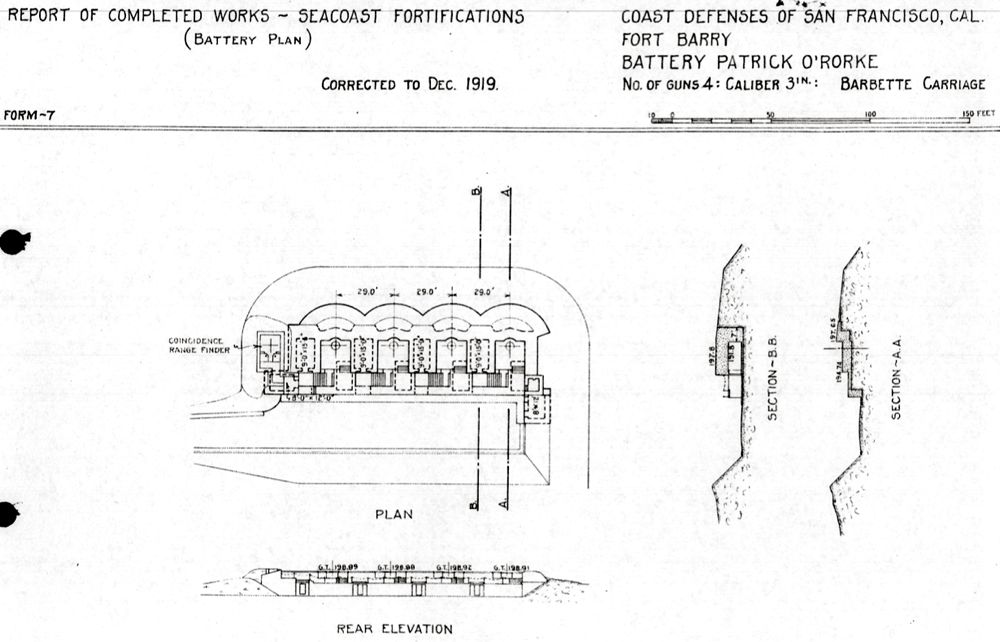
Battery Patrick O'Rorke consisted of four 3-inch, 15-pounder breech-loading rifles. The guns were mounted on barbette carriages Model 1903, Nos. 68-71 manufactured by the Watertown Arsenal. Work began in January 1902. The guns were placed 29 feet apart. The battery was located at an elevation of 199 feet. Construction costs were about $30,000. The battery was transferred to the troops on June 8, 1905.
These guns were mounted on pedestal barbette carriages, Model 1903, # 68, 69, 70, 71, from the Watertown Arsenal. The Carriage for this gun had a Maximum elevation of 16 degrees, Minimum elevation was, 10 degrees.
